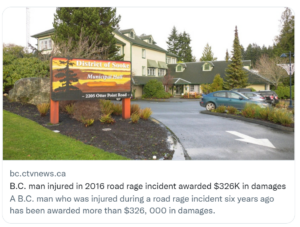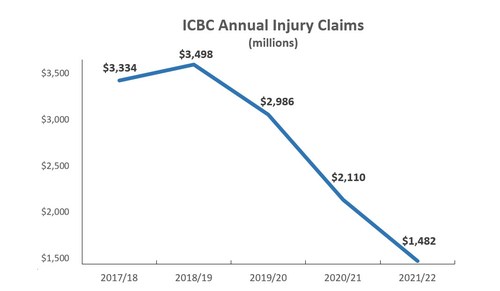
So the public is slowly learning that ICBC ‘enhanced care‘ really means victims were stripped of their rights to sue bad drivers, to be properly covered for their wage loss, treatment expenses, pain and suffering and more.
When ICBC rolled out ‘enhanced care’ one of the soundbites they boasted about were lump sum payments that victims of ‘catastrophic’ injuries and those with ‘permanent impairment’ will receive.
Under the tort system victims has the right to non-pecuniary damages. Basically payment for pain and suffering. The amount varying based on severity of injury. There was no hard chart but readers of this site will have a good sense of the damages courts would award from the thousands of case summaries here. Chronic pain, physical and psychiatric injuries would routinely have awards over six figures. Truly catastrophic injuries would bring non-pecuniary damages near the ‘rough upper limit’ of Canadian negligence law over $400,000.
Let’s look at some sobering numbers of what these real damages have been replaced with.
Under the “permanent impairment regulation” if you suffer an injury with a ‘permanent impairment’ you are entitled to a lump sum. But the sums are grotesquely low. Here’s how it works.
A figure of $167,465 is the starting point. Then, depending on your specific injury, (and remember, for many of these we are talking about not just the injury but those that have not recovered and are not expected to in the future) a fraction of this is awarded.
Let’s do some math under this meat chart. Here’s the ‘enhanced care’ for the following permanent injuries
Fracture sternum = 1% = $1,675
Fractured forearm with ‘non specifid abnormal healing’ = 1% = $1,675
Scaphoid fracture with avascular necrosis = 2% = $3,349
Pelvic fracture with non-specified abnormal healing = 1% = $1,675
Distal above knee AMPUTATION = 35% = $58,612
Fracture femur (biggest bone in the body!) with non-specified abnormal healing = 1% = $1,675
Thigh muscular atrophy of 2 cm or more = 2% = $3,349
Knee fracture with non specified abnormal healing = 1% = $1,675
Avulsion fracture affecting the knee or leg = 2% = $3,349
Post traumatic patellofemoral pain syndrome = 1% = $1,675
AMPUTATION of the ankle = 25% = $41,866
Compression fracture of the low spine with loss of height under 25% = 2% = $3,349
Post traumatic alteration of brain tissue with laceration or intracerebral hematoma = 2% = $3,349
Folks, I could go on. There are hundreds of other examples in this ICBC meat chart. The numbers are woeful. Bottom line for British Columbians – you better hope you never get seriously impaired by the careless driving of another in this Province. If you do ICBC will add insult to your injury by way of their meat chart.
![]()







